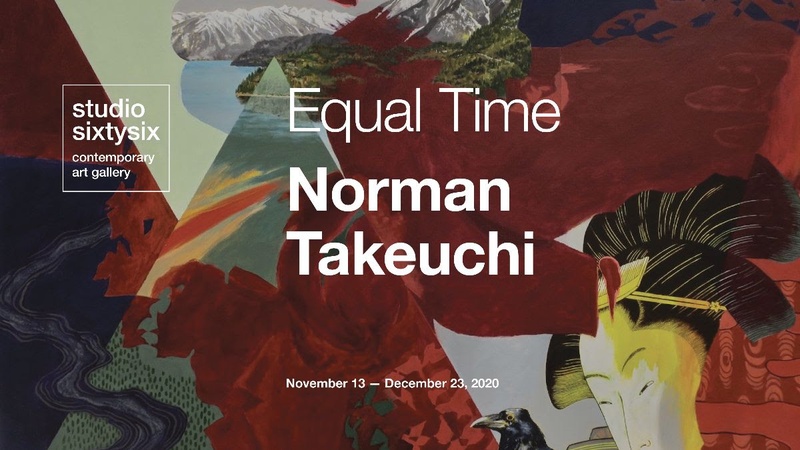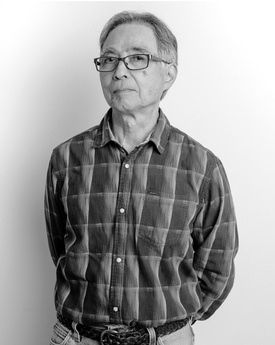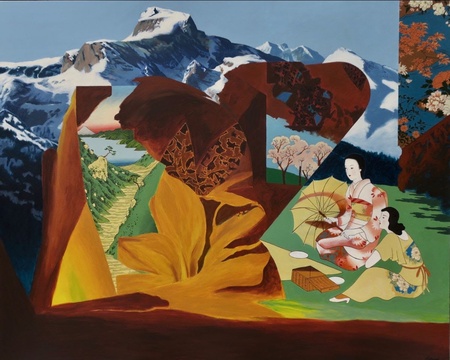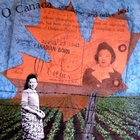“Over the years, my paintings have explored my Japanese Canadian identity. While earlier works reflected feelings of ambivalence and discomfort with my ethnicity, passing time has slowly shaped my feelings into those of acceptance and a certain amount of pride.… The works in Equal Time, produced between 2018 and 2020, continue the exploration of the Japanese Canadian.”
— Norman Takeuchi, from the new exhibition catalogue (Studio Sixty Six Contemporary Art Gallery)
On November 23, Nisei Norman Takeuchi launched an exhibition of Japanese Canadian World War Two internment themed art that was two years in the making.
The important new work of this Ottawa-based artist reflects his lived experience of being interned in a World War Two prison camp and the process of coming to terms with both his Japanese and Canadian selves. Indeed, the graduate of the Vancouver Art School (1962) explores the complexity of what it means to balance these into his unique Japanese Canadian self, especially at this pivotal time in history. Like his previous shows with ironic names like A Measured Act (2006), Takeuchi’s work prompts one to pause to (re)consider the question of where Japanese Canadians come from, who and what we are as JCs.
The Equal Time exhibition is at the studio sixty six contemporary art gallery in Ottawa until December 23, 2020.
Can you explain the meaning of “Equal Time”?
The title Equal Time refers to the Japanese community’s struggle for equality in all aspects of Canadian life and by extension, today, a similar struggle by other ethnic minorities.
What was in the way of that before this time for you?
For me, I think the biggest barrier to feeling equal was my own feelings of inferiority and shame about who I was. For the longest time, I was unable to openly admit these feelings until I began to discover that I was not alone. This helped a lot.
How do your Issei parents factor into this exhibition?
Because my parents never talked about their wartime experiences, it wasn’t until I reached adulthood and began reading and researching that period that I began to understand something of the trauma and the hardships of what they went through. My attempt to understand all this is what lies beneath the work that I do. My latest series which I’m working on now, pays tribute to my parents and to others of their generation for the way they struggled and persevered to eventually rebuild their lives so that people like me do not have to go through the same thing.
What was the impact of WW2 Internment on them?
Since they didn’t talk about it, I can only guess. My dad was a rather grim person who was quick to anger and I don’t know if that was just his nature or if the difficulties he experienced made him into that kind of person. My mother was the opposite.
Was there any particular impetus for this work at this time in your career?
Although this series of paintings is a continuation of my exploration into who I am as a Japanese Canadian, I was looking for a new way to continue with this theme. I had become to feel that the work I had been doing up to this point was becoming a bit repetitive and formulaic. Creativity was no longer there. That was my impetus. It was time to change gears.
Looking at your work for Equal Time, your use of triangles is strongly symbolic of the mountains of BC as well as those of Japan. How conscious of this were you?
That’s an interesting way to look at the triangles but I was not conscious of that at all. I chose the triangle mainly as a device to stabilize complex compositions. In the initial stages of a painting, I deliberately create an unbalanced, almost chaotic composition and then search for ways to bring order and balance to the picture. By incorporating a geometric device like the triangle, as in this case for instance, it serves the purpose of bringing order and stability to the disorder. I take this approach because it forces me into a situation where there is no predictable solution and a new one has to be found. The choice of the equilateral triangle instead of another triangle was deliberate. It has the look of durability and the three equal sides suggest equality, something that was sadly non-existent for the Japanese Canadians in the 1940’s.
The connection that I make is the Japanese caricatures/Ukiyoe/Mt. Fuji and the mountains symbol which connects our 2 countries and cultures. Was that a source of tension for you growing up as an artist?
Yes, it was a source of tension and confusion. My heritage is Japanese and I look Japanese but I can’t speak the language nor do I know much about Japanese culture and traditions. This makes it tricky to make references to Japan so I have to tread carefully and not make mistakes nor to make myself look as if I know more than I really do. The only honest approach I can take is to focus on BEING Japanese Canadian and make only superficial references to Japan.
Have you made peace with that duality?
Yes, I have. Coming out, so to speak, by acknowledging my ethnicity through my paintings has been very liberating.
Can you talk a bit about your work View of Mt. Fuji from Lemon Creek? What has been the reaction to your work so far?
The main image in this painting obviously is Hokusai’s famous Fuji in Clear Weather. Because it’s such a powerful symbol of Japan and is instantly recognizable, I wanted to use it to represent the Japanese component of this painting. Once the image was completed on the canvas, I began the process of adding the abstract forms which represent my Canadian side. While I was painting Mt. Fuji, I visualized an internment camp at the base so I chose Lemon Creek. Much later, I added the two boys playing baseball. Copying these woodblock prints onto my canvases might seem unethical to some people but in fact, I’m following the time honoured artists’ tradition of ‘stealing’ from other artists. I’ve only gotten positive reactions so far from both artists and non-artists through words and sales (I’m sure there are a lot of people who don’t know what to make of my work but they have remained politely silent). One of the best endorsements I’ve received is from the ROM which purchased one of my large pieces.
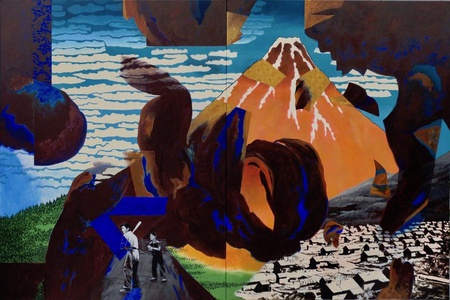
Given the times, so many generations after WW2 (1945) and the context, Covid19, what’s the message that you’d like to get out about the Japanese Canadian experience?
I would like the JC experience to be more widely known. So many Canadians, it seems, are ignorant of the terrible injustice that was committed to the Japanese by their own government in their own country. This is a huge gap in their knowledge of Canadian history and it should be filled.
Can we afford to forget any of this?
No, we cannot.
Are there outstanding issues for yourself that you’d like to talk about here?
I can’t think of any. I guess I’m in a good place right now, despite the pandemic.
What do you think of the idea of art as a form of political action?
Art, whether it’s visual art, music, literature, can be a powerful force for action and change. Think of propaganda posters, (Picasso’s) Guernica.
What would you like to see more or less of?
I would like to see more people get involved in the arts and less reliance on technology (but that’s unrealistic, I know).
Is it necessary to separate those distinctly Canadian and Japanese images or is the sum of that who we are as Japanese Canadians?
I don’t think it’s necessary. There is something appealing and comforting about the two cultures coming together and creating a richer whole. There is a greater possibility for tolerance and understanding.

How strange is it to launch an art show in the middle of a global pandemic?
It’s frustrating and very unsatisfying. It’s depressing to think how much effort has gone into the artwork and so few people will see it. At least we now have the internet (maybe I shouldn’t be so negative about technology after all) and people are getting a pretty good view on their devices of what’s hanging on the gallery walls. They are even buying!
These days, what’s giving you hope?
Not much. With the political circus in the States, people recklessly ignoring COVID protocols, systemic racism, it’s pretty grim out there.
Any final thoughts?
Yes. On a more positive note, people have endured appalling tragedies before and have managed to overcome and rise up. It will happen again.
* * * * *
Equal Time
At Studio Sixty Six Comtemporary Art Gallery
November 13 - December 23
© 2020 Norm Ibuki


